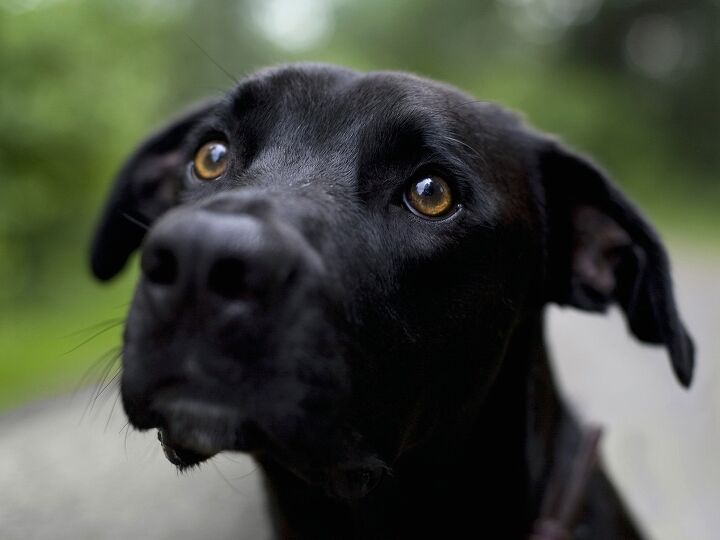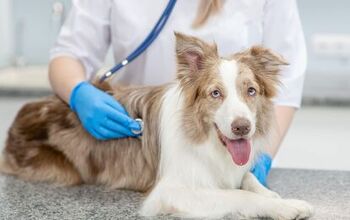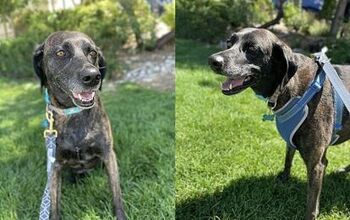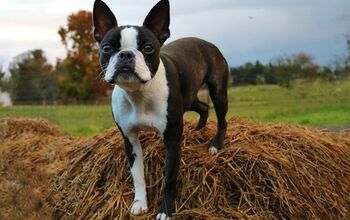Plott


About Plott
The Plott is a brave and courageous hunter as well as a devoted and loyal family companion. Being an athlete, he needs tons of exercise. Whether he is hunting in the mountains or jogging in the suburbs, the Plott loves to be outside interacting with his owner. He is a high-energy dog and needs an active family to keep him happy.
This breed is quite social and accepts friendly guests readily. Although he is protective, the Plott senses if his family is in danger and if not, the guest is usually welcomed with a wagging tail. Any threat to the Plott’s family will result in melee. This breed loves his family and will do all that he can to protect them. To learn more about the Plott, read on.
The Plott is a brave and courageous hunter as well as a devoted and loyal family companion.
Originating from the mountains of North Carolina in the United States, the Plott gained his name from the man who developed them, Johannes Plott. These dogs were bred to take out wild boar as well as track and tree bears. Today, the Plott still hunts and can primarily be found in rural and mountainous areas hunting with and protecting their families.
The Plott is a descendant of the five Hanoverian Hounds brought to the U.S. from Germany by Johannes Plott in 1750. Plott was rather secretive about developing his breed. Johannes’ children and grandchildren continued to develop the breed after his death. Plotts were distributed in the Smokey Mountains and proved themselves to be incredible hunting dogs.
In the 1900s, a gentleman by the name of Bevins bred some of his Plotts to Black and Tan Hounds. This created dogs with incredible scenting abilities as well as introduced the brindle and black saddle markings to the breed. From this cross, Boss and Tige resulted. These are the main dogs behind the breed we now know as the Plott.
All hunting dogs require a high-quality food specifically created for their activity levels. Considering the Plott is an avid hunter, he needs specialized food. It is best to feed dry kibble as this can cut down on veterinary bills associated with tooth decay and gum disease. It is essential that the Plott’s meals be separated into two smaller meals as opposed to one large meal. Exercise should be prohibited after meals. This breed is predisposed to gastric torsion, also known as bloat. This life threatening condition can be prevented with smaller meals and limited exercise after eating.
Because of his keen intelligence and eagerness to please his family, the Plott is a wonderful student.
Because of his keen intelligence and eagerness to please his family, the Plott is a wonderful student. It is important that the owner ensure that the Plott understands his role in the pack as Plotts tend to try to become the dominant one in the pack. This can never be allowed. The dog must be taught his place from an early age. Treats and praise will work better than harsh words and manhandling with this breed.
Those who plan to use their Plotts for hunting will be pleasantly surprised. It takes almost no training at all for this breed to hunt. They go on pure instinct and do rather well. Learning the dog’s signals and voice will be better than all the training in the world to the owner.
On the average, the Plott weighs between 40 and 75 pounds and stands between 20 and 27 inches tall at the withers.
Plotts attach to their families quickly. They are protective of their people and make excellent watchdogs. Because they were bred to be hunting dogs and hunt in packs, the Plott can have some dominance issues. This can be a problem for passive owners or families with small children.
Plotts love living with several dogs. This is representative of how they lived centuries ago. They form strong bonds with their canine companions however; there will be occasional squabbles. This is a normal part of pack life. It is merely a competition to see which dog is going to be Alpha within the pack. So long as the humans are seen as being higher up on the Totem Pole than the dogs, this bickering should not be a problem.
A vocal breed, the Plott can drive his family and the neighbors crazy with his barking. This noise can lead to trouble within the neighborhood as well as problems with the Division of Animal Control. The Plott must be taught to quiet on command at an early age or he can be problematic to have in your household.
The Plott is an incredibly healthy dog. Gastric torsion is the main issue within the breed that can be devastating. Plotts do tend to experience a high incidence of ear infections. This is due to the warmth inside of the ears because they are drooping. Weekly ear cleaning can help avoid infections.
Generally, Plotts can live to be between 12-14 years of age.
For centuries, Plotts were bred to hunt wild and vicious animals. They were and still are very active dogs. The Plott craves exercise and needs it to be healthy as well as a well-adjusted member of the family. This breed would make a great companion for the avid jogger or runner. Better yet, he would be thrilled to be your hunting buddy and sleep lightly beside you while camping, keeping his sensitive ears open for any dangers. Plotts also love to play fetch and with training, make great Frisbee partners. Without proper exercise, the Plott can become extremely disrupted and even aggressive. Exercise is essential to this breed.
Plotts can excel in obedience and agility courses, with proper training. The activities involved with agility training will work all of their muscles and show off their athleticism as well. They make great companions for active families with older kids.
Plotts attach to their families quickly. They are protective of their people and make excellent watchdogs.
The American Kennel Club writes: “Plotts are eager to please, loyal, intelligent and alert in the home, but are aggressive, bold and fearless while hunting. Owners should be prepared to hear the Plott’s “voice” in the home at times. An athletic breed, they require daily exercise, but their short coats are low maintenance.” The Plott was recognized by the AKC in 2006.
The Plott’s coat is rather coarse and short in length. It is double coated considering the breed has been bred for hunting and needs protection from the elements and briars and brambles. The Plott sheds minimally.
Brindle is the preferred coloration of the Plott however; other colors are acceptable. Black, brindle with a black saddle marking and black with brindle markings are permissible. A minimal amount of white on the feet and chest is considered to be acceptable by the AKC however; white is not the desired color.
All puppies are adorable and this is true of the Plott puppy too. Because Plotts were bred to hunt in packs, it is very important that they start obedience training as soon as possible. This will help the owner to establish his Alpha role in the family and let the dog know that he is not and will never be, the top dog in the household.

Amy Tokic, Editor of PetGuide.com, is a passionate animal lover and proud pet parent of Oscar, a Shih Tzu/Chihuahua cross, and Zed, a Japanese Chin. Her love of animals began in kindergarten, when she brought her stuffed dog Snoopy into class with her every day. Now, she writes about her adventures in pet ownership and tirelessly researches products, news and health related issues she can share with other animal enthusiasts. In her free time, Amy loves perusing used book and record stores, obsessing over the latest pet products available and chasing squirrels with wild abandon (a habit attributed to spending too much time with her pooches).
More by Amy Tokic

























